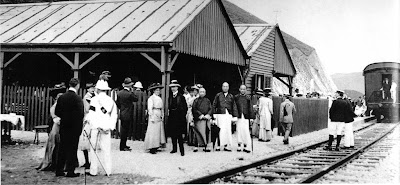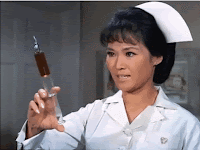Updated (partial) on 5/7/2010
No, not Ocean's 13. Sutherland's 13!
In 1864, Thomas Sutherland, the Hong Kong Superintendent of P&O SN Co. 大英火輪船公司 (鐵行輪船公司), ventured to establish a local bank that would better address the needs of mercantile operators in Hong Kong, Shanghai, elsewhere in China as well as in Japan. He was in the opinion that the existing branch operations of banks from Britain and India [1] weren't exactly helpful since they were controlled by directors who sat in London or Bombay and had little knowledge of or interest in the affairs of Hong Kong.
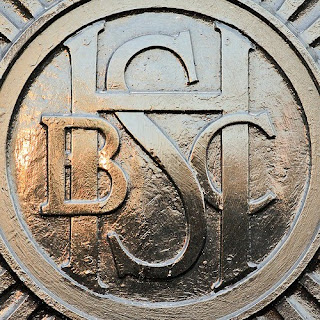.jpg)
The stimulus to action came when he became aware of the definite intent of a group of Bombay financiers to launch a new bank in Hong Kong, as a local bank, to be named the Bank of China in mid July 1864, and wanted to preempt this event with the new bank he had in mind. On July 22, 1864, Sutherland drew up the prospectus of this bank he named 'Hong Kong and Shanghai Banking Company Limited' with his legal advisor, E.H. Pollard, and began to rally support amongst his friends and business associates. 5 days later, a Provisional Committee was formed with 13 men pledged their support and all the shares allotted to Hong Kong of the total capital $5 million were taken up. When the representative of the Bank of China arrived from Bombay several weeks latter, he could find no one to take his shares or agree to become a director. Unbeknown to Sutherland and his 13 comrades-in-wealth who wanted to establish no more than a "colonial drug bank" originally, not only had they created one of the world's most successful banking concerns transcending three centuries, but also an entity that shaped, in part, what Hong Kong is today.
Here are the Sutherland 13:
Chairman of the Committee - Francis Chomley, Chairman, Dent and Co. 寶順洋行
Thomas Dent arrived at Canton in the position of Consul of Sardinia in 1823. He entered the trading firm of Davidson and Co. in the same year and when Davidson left China the following year, Dent became the firm's senior partner and duly change the firm's name to Dent and Co.. The company was one of the three big opium merchants in China in the 1830s; the other two were the Scottish firm Jardine, Matherson and Co. and the American firm Russell and Co. Since the departure of William Jardine for England in January 1839, his rival Lancelot Dent – younger brother of Thomas - was considered the senior foreign merchant, though Dent and Co. remained secondary to Jardine Matheson. Lancelot Dent was summoned and held by Lin Zexu on March 24, 1839, Imperial Qing's Commissioner charged to rid of opium, that, and the consequential events had led to the outbreak of the Opium War. Lancelot Dent was deported from China on May 23 and went to Macao, subsequently the firm's headquarters was moved to Hong Kong in 1841. The firm collapsed during the 1866 world financial crisis and was liquidated in 1867. Francis Chomley chaired the provisional committee's first meeting, held on August 6, 1964. Chomley was the Senior Unofficial Member of the Legislative Council from 1864 to 1866.
William Adamson, Manager, Borneo Co., Ltd. 搬鳥洋行
The Borneo Company Limited was incorporated in London in 1856 as a ship operator and general merchant, to exploit the business opportunities in Sarawak. It originated from the establishment of a branch in Singapore by a firm of Glasgow merchants - MacEwen & Co. It became closely linked with the Brooke family (James Brooke, a Scotsman who was close to the Sultan of Brunei and was appointed by the British government in 1847 as British governor of the colony of Labuan, and as consul general to the island of Borneo) which established itself as the rulers of Sarawak in Borneo - the 'White Rajahs', as they were called. William Adamson, a Scotsman, was the manager of BCL's Hong Kong branch that opened for business also in 1856 and the principal activity was to import consignments of rice from Siam.

Because of the rice importing operation, Adamson became acquainted with Tan Kim Ching, a Singaporean who is very close to King Mongkut (King Rama IV) of Siam. When the King asked Tan's help to look for a suitable English tutor for the Royal Children, Tan upon the suggestion from Adamson recommended a yound widow who happened to be in Singapore in that time, Anna Leonowens. Yes, no joke, this is how 'The King and I' began!
Unavoidably, as it seems, for all successful trading firms in Hong Kong at that era, BCL also dealt in opium.
Robert Brand, Smith Kennedy and Co. 公易洋行
Smith Kennedy and Co., a British firm, founding member of the Hong Kong Chamber of Commerce, probably went done in 1966. Robert Brand, probably born ca.1837 in Montrose, Angus, Scotland, partner of SKC in Hong Kong and Shanghai from 1862, later became a partner in Brand Brothers 義源洋行 .
Rustomjee Dhunjeeshaw, P.F. Cama and Co. 順章洋行
Pallanjee Framjee, P. and A. Camajee and Co.廣南洋行
 Albert Farley Heard, Augustine Heard and Co. 瓊記洋行
Albert Farley Heard, Augustine Heard and Co. 瓊記洋行
Augustine Heard and Co., tea and opium trader, was founded in 1840, in Canton, by Ipswich, Massachusetts businessman and former Samuel Russell & Co. [2] partner Augustine Heard, and his partners, Joseph Coolidge and John Murray Forbes. AHC becoming the third largest American firm in China in the mid-nineteenth century. The firm also introduced and imported steamships to China, and became the main trading agent for several large firms, including John Swire & Sons Limited. Photo of Augustine Heard (1785-1868).
Albert Farley Heard (1833-90), Augustine Heard's nephew, became partner of the firm from June 1, 1862 and remained in China until 1875. AHC, like many other trading operators at that time, suffered from the world financial crisis in 1866, but was fortunate enough to stay open until 1875. Because of his role as the representative the Lowell Gun Company in Russia in 1877, A.F. Heard became close to the Russian government and was appointed the Russian Consul-General in Shanghai and later as the representative of the Chinese Government in Russia. At the final stage of his career, A.F. Heard became the private secretary to William C. Endicott, Secretary of War, and later as librarian for the U.S. Army. A Yale man (graduated in 1853), Heard married Mary Allen Livingston [3], a descendant of French Admiral de Grasse, and died childless in 1890. His interest in the history of the Russian Orthodox Church led him to publish The Russian Church and Russian Dissent in 1889.
George Johann Helland, John Burd and Co. 畢洋行
John Burd and Co., general merchant and mariner, was founded by Scottish sea captain, John Burd (1794-1855) and Danish sailor, Mads Lange in C.1839 in Canton. The company was moved to Hong Kong in 1842. A former employee of the Danish East India Company, Burd became close to the Danish mariner community that also handled diplomatic affairs in the Orient and, in 1845, Burd was appointed the first Danish consul in Hong Kong. After Burd's death in 1855, the firm was headed by his Danish associate Jens Friederich Horsens Block. Block returned to Denmark in 1862 and George J. Helland, a Norwegian took over as head of the firm and as the Danish consul. Additionally, Helland was also consul for Sweden and Norway. In c.1876, he became the General Agent (China) for Det Store Nordiske Telegraf-Selskab (Great Northern Telegraph Company) of Vice Chairman of the Chamber of Commerce in 1869.
Douglas Lapraik
Douglas Lapraik (1818-1869), Scotsman, came to Hong Kong at the age of 25, watchmaker, opium dealer, founder of Hong Kong, Canton and Macao Steamboat Company (Arthur Sassoon was a director) 1865, co-found Hong Kong and Whampoa Dock Company with Thomas Sutherland in 1866.
Henry Beverley Lemann, Gilman and Co. 太平洋行
George Francis Maclean, Lyall, Still and Co. 孻也洋行

Photo of a much older
NissenWoldemar Nissen, Siemssen amd Co. 禪臣洋行
Siemssen, the second German firm to open office in Hong Kong (Pustau and Co. was the first), was founded by Hamburger Georg Theodor Siemssen (b.1816 - d.1886) in Canton in 1848. Siemssen bought a lot on Queen’s Road near the present HSBC Building in 1855 to house his Hong Kong operation. Siemseen was also present in Shanghai, Tianjin and Qingdao and became the most prominent mercantile and shipping concern from Germany in China. He left Hong Kong in 1858 to attain to his business in Hamburg leaving the Hong Kong operation to two partners: Ludwig Wiese, a Norwegian naturalized as a British citizen, and fellow Hamburger Agathon Friedrich Woldemar Nissen (a partner since 1855). Wise left Siemssen (Hong Kong) in 1863 and went to live in London; hence Nissen became the senior partner in Hong Kong and China. Nissen (b.1836 Hamburg - d.1896 Hamburg) was Deputy Chairman of HSBC in 1866 and when John Dent stepped down as Chairman in 1867 due to Dent and Co.’s bankruptcy, Nissen became the Bank Chairman, he was 31. In Hong Kong, he was Consul for the Hansa Towns of Bremen, Hamburg and Lubeck as well as for Sweden and Norway. Nissen was a founding member of the Hong Kong Chamber of Commerce as well as a member of the Chamber’s first General Committee. Nissen left Hong Kong in October 1867 and returned to Hamburg. He became the President of the Hamburg-American Steamship Company, and a director of the Anglo-German Bank of Hamburg.
Arthur Sassoon, D. Sassoon, Sons and Co. 沙遜洋行
Waldemar Schmidt, Fletcher and Co. 費禮查洋行
Fletcher and Co., formerly Innes, Fletcher & Co. - a partnership between James Innes and Mr. Fletcher (still looking up info on him), opium trader. J. Innes (1787-1841), nicknamed 'Storm Petrel of Canton' and 7th Chieftain of the Inneses of Dunkinty, Scotland, came to China in C.1825 and started as a free trader in opium before the partnership with Fletch. No information on Waldemar Schmidt was found at this time, except that his name sounds German.
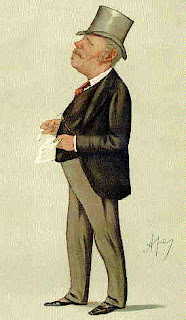
And, here is the man: Thomas Sutherland, Superintendent, P&O SN Co.
________________________________
The following Statement of Intent was issued in the name of the Chairman of the Provisional Committee,
"Notwithstanding the very extensive foreign trade with China and Japan [the Hongkong and Shanghae Banking Company (Limited)] is the first Bank locally started or in which the majority of our Merchants are directly interested ... the chief inducement which the promoters had in view was to supply an absolute want arising out of inability of the Branch Banks established here to meet the varied requirements of local trade. This trade implying the business between Hong Kong and the open ports in China and Japan is now of the most extensive character and requires a more special mode of dealing than any Bank Agency can possibly supply.
In this respect the promoters of the Hongkong and Shanghai Bank believe that from the experience of its Directors and the sources of information at their disposal arising from the fact of the proprietors being connected with every branch of trade in this country, they will be enabled most materially to aid the legitimate working of business."
Francis Chomley, Chairman, Provisional Committee
________________________________
[1] There are about ten banks having their branch operations in Hong Kong including:
Agra and United Service Bank (represented by Henry Noble)
Central Bank of Western India (represented by W.M. Davidson)
Chartered Bank of India, Australia and China (represented by A. Hay Anderson)
Chartered Mercantile Bank of India, London and China (represented by W. Ormiston)
Commercial Bank of India (represented by P.R. Harper)
Oriental Bank Corporation (represented by W. Lamond)
Bank of Hindustan, China and Japan
Asiatic Banking Corporation
[2] Samuel Russell & Co.
[3] I found the marriage notice of A. E. Heard from the New York City Marriage & Death Notices 1857-1868. Although this is not relevant to the post topic, but this discovery is too good to not share with you, ...
MARRIED 1868: Heard--Livingston.--On Wednesday, Oct. 28, at Callendar House, Tivoli, N.Y., by Rev. Mr. Platt, Mary Allen, daughter of Henry W. Livingston, of the Manor of Livingston, to Albert Farley Heard, of Ipswich, Mass.
- TO BE COMPLETED -

 The three-masted, 800-ton, 160-ft long Chinese trading junk – Keying (耆英號) [1], set sail from Hong Kong on December 6, 1846. Her destination – London. Under the command of British captain Charles A. Kettett, and manned by a crew of 12 English and 30 Chinese, the 20-gun, teak-made junk sailed around the Cape Horn on March 6. Having paused at St Helena, April 17 to 23, they set sail for England but were blown off course and ended up visiting New York and Boston first. Since finally arriving in London on March 27, 1848, 477 days after leaving Hong Kong , the Keying had been moored in the Thames at Blackwall, where it rapidly became established as one of the most popular visitor attractions in London. Some illustrious visitors toured the junk including the Duke of Wellington and Charles Dickens, and several of the young Chinese crew visited Queen Victoria at Buckingham Palace. The Illustrated London News had included the arrival of Keying in London as part of the “Events of this year in the Illustrated London News”. The Keying was eventually taken up to Liverpool where she was scrapped and her timbers used in building Mersey ferry boats.
The three-masted, 800-ton, 160-ft long Chinese trading junk – Keying (耆英號) [1], set sail from Hong Kong on December 6, 1846. Her destination – London. Under the command of British captain Charles A. Kettett, and manned by a crew of 12 English and 30 Chinese, the 20-gun, teak-made junk sailed around the Cape Horn on March 6. Having paused at St Helena, April 17 to 23, they set sail for England but were blown off course and ended up visiting New York and Boston first. Since finally arriving in London on March 27, 1848, 477 days after leaving Hong Kong , the Keying had been moored in the Thames at Blackwall, where it rapidly became established as one of the most popular visitor attractions in London. Some illustrious visitors toured the junk including the Duke of Wellington and Charles Dickens, and several of the young Chinese crew visited Queen Victoria at Buckingham Palace. The Illustrated London News had included the arrival of Keying in London as part of the “Events of this year in the Illustrated London News”. The Keying was eventually taken up to Liverpool where she was scrapped and her timbers used in building Mersey ferry boats. Keying had been purchased in August 1846 in secrecy by Douglas Lapraik, who braved a Chinese law prohibiting the sale of Chinese ships to foreigners. Hoping to use the vessel as a floating exhibition in London, with a view to attracting trade and tourists to Hong Kong, Lapraik and his associates in this maverick promotion invested a sum of $75,000 in the junk.
Keying had been purchased in August 1846 in secrecy by Douglas Lapraik, who braved a Chinese law prohibiting the sale of Chinese ships to foreigners. Hoping to use the vessel as a floating exhibition in London, with a view to attracting trade and tourists to Hong Kong, Lapraik and his associates in this maverick promotion invested a sum of $75,000 in the junk.[1] The Junk was named Keying most probably for the purpose to mock a high ranking Qing official of the same name. Aisin-gioro Keying (耆英) (1787-1858), or Qiying in Mandarin Chinese, was a clansman of Manchu Plain Blue Banner and a member of the Qing imperial family. Keying was best remembered as the negotiator and signatory of the Treaty of Nanking (with Britain), the Treaty of Whampoa (with France), the Treaty of Wanghia (With USA) and the Treaty of Canton (with Sweden-Norway)pursuant to the Frist Opium War. Whilst negotiating with representatives of Britain and France in Tianjin in 1858 for a treaty to end the Second Opium War, Keying left the negotiations after being humiliated by the British interpretors who sought to expose his duplicity by producing documents the British had captured in Guangzhou, in which Keying expressed his contempt for the British. Keying was later arrested for having left his post in contravention of imperial order. He was sentenced to death but was allowed to kill himself because of his royal stature.



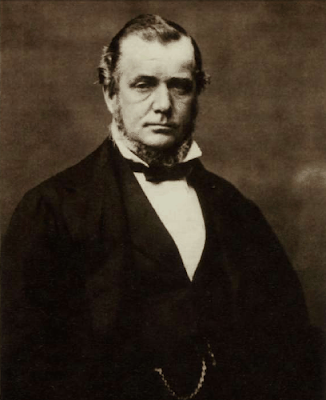
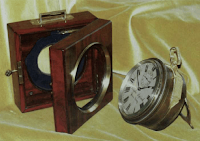

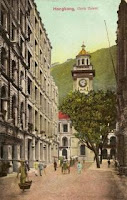
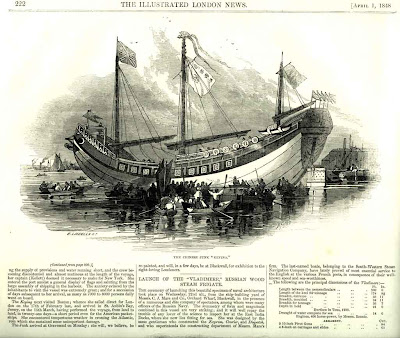
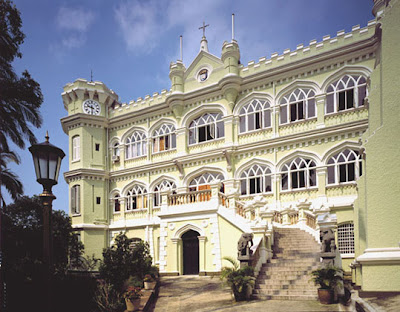
.jpg)


















